Are there issues with using resistors that have power ratings much
higher than required?
Bigger sized resistors may have higher self-inductance and this self-inductance in a component that is used to measure fast currents can lead to errors.
V across an inductor = L\$\dfrac{di}{dt}\$ and this is the problem.
Typically, a 3cm long piece of wire of 0.4mm diameter will have an inductance of 30nH (irrespective of its resistance) and if the current changes at 1 amp per microsecond (quite normal in a buck or boost converter), the volt drop due to di/dt will be 30mV. If the resistor is 3cm long and 0.03 Ohms, there will be a total volt drop of 60 mV for a sudden change of 1 amp flowing i.e. 50% bigger than what would be expected from a pure resistor.
Bigger sized resistors also have more self-capacitance (and capacitance to ground) and means another error when measuring high-speed signals. Here is a table from Vishay that shows tha parasitic inductance and capacitance of small SMT resistors - note the final columns: -

You can see that capacitance (parallel) and inductance (series) reduce with size and if you are operating above 1GHz resistor sizes become a big deal.
Also, as frequencies of RF transmissions rise there comes a point when the physical length of a resistor can cause standing wave problems. At 300MHz, RF has a wavelength of 1m and it is fairly unfeasible for anything significantly less than one-tenth of a meter will cause problems but what about wifi frequencies at 2.45 GHz - this has a wavelength of 12cm and conceivably, at this sort of frequency resistors that are about 1cm long will start to show problems.
WiFi is now occupying the 5 GHz band and some are starting to emerge at 60 GHz. 60 GHz has a wavelength of 5mm so realistically only 0201 resistors are not going to cause a significant problem.
